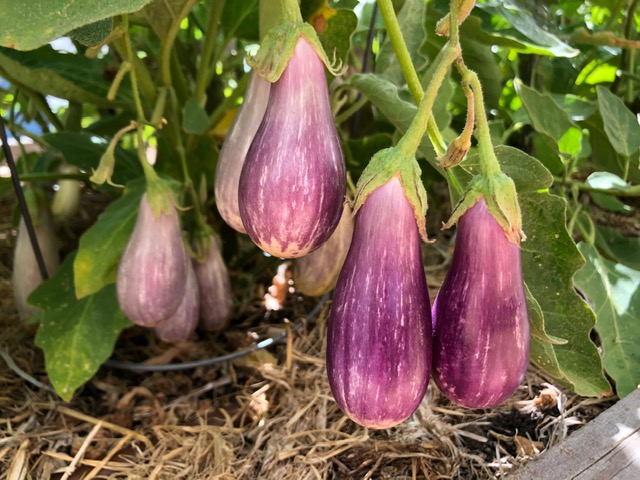

|
|
Keep those summer crops harvested, and they'll continue producing into fall. (Photo: Kathy Morrison)
|
Hot and smoky; those may be favorable qualities for a spicy pepper, but not for the weather.
Unfortunately, orange haze continues to tint our skies as smoke from the Dixie Fire and other blazes accumulates in the Central Valley. Meanwhile, Sacramento area temperatures are again spiking over 105.
According to the National Weather Service, Sacramento will be under a heat advisory now through at least Sunday night. Predicted high for Sunday in Sacramento: 106 degrees. Keeping this oven baking are low temperatures in the 70s, 10 degrees above average for mid-August.
Monday also should see triple digits in the afternoon, but then we’ll finally get some overnight relief. Tuesday’s high is forecast for “only” 92 degrees – normal for this time of summer. For the rest of the week, lows are expected to dip back down to 60 or 61 degrees, helping to keep daytime highs in check. The weather service forecasts low to mid 90s Tuesday into next weekend.
So, take it easy this weekend. Don’t stress in this heat and bad air. Instead, wait until temperatures cool down a little before tackling major chores, fertilizing or planting. That cool-down will be here soon.
* Harvest tomatoes, beans, squash, pepper and eggplants to prompt plants to keep producing.
* Give your veggies a deep watering twice a week, more if planted in containers.
* After watering, give tomatoes, peppers and other non-leafy veggies a boost with phosphate-rich fertilizer to help set fruit. Feed every other week.
* Watch out for caterpillars and hornworms in the vegetable garden. They can strip a plant bare in one day. Pick them off plants by hand in early morning or late afternoon.
* Mulch can be your garden's best friend; it conserves moisture while blocking out weeds. But don't let mulch mound around stalks, stems or trunks. That can promote rot.
* Camellia leaves looking a little yellow? Feed them some chelated iron. That goes for azaleas and gardenias, too.
*Feed citrus trees their last round of fertilizer for the year. This will give a boost to the fruit that's now forming.
* Pinch off dead flowers from perennials and annuals to lengthen their summer bloom.
* Dead head roses.
* Pick up after your fruit trees. Clean up debris and dropped fruit.
* In the garden, direct seed beets, bush beans, carrots, leaf lettuce and turnips.
* Plant potatoes.
* Indoors, start seedlings for fall vegetable planting, including bunching onion, cabbage, broccoli, cauliflower, kale, radicchio and lettuce.
Comments
0 comments have been posted.Sacramento Digs Gardening to your inbox.
Sites We Like
Garden Checklist for week of July 21
Your garden needs you!
* Keep your vegetable garden watered, mulched and weeded. Water before 8 a.m. to reduce the chance of fungal infection and to conserve moisture.
* Feed vegetable plants bone meal, rock phosphate or other fertilizers high in phosphate to stimulate more blooms and fruiting. (But wait until daily high temperatures drop out of the 100s.)
* Don’t let tomatoes wilt or dry out completely. Give tomatoes a deep watering two to three times a week.
* Harvest vegetables promptly to encourage plants to produce more. Squash especially tends to grow rapidly in hot weather. Keep an eye on zucchini.
* Pinch back chrysanthemums for bushy plants and more flowers in September.
* Remove spent flowers from roses, daylilies and other bloomers as they finish flowering.
* Pinch off blooms from basil so the plant will grow more leaves.
* Cut back lavender after flowering to promote a second bloom.
* It's not too late to add a splash of color. Plant petunias, snapdragons, zinnias and marigolds.
* From seed, plant corn, pumpkins, radishes, winter squash and sunflowers.